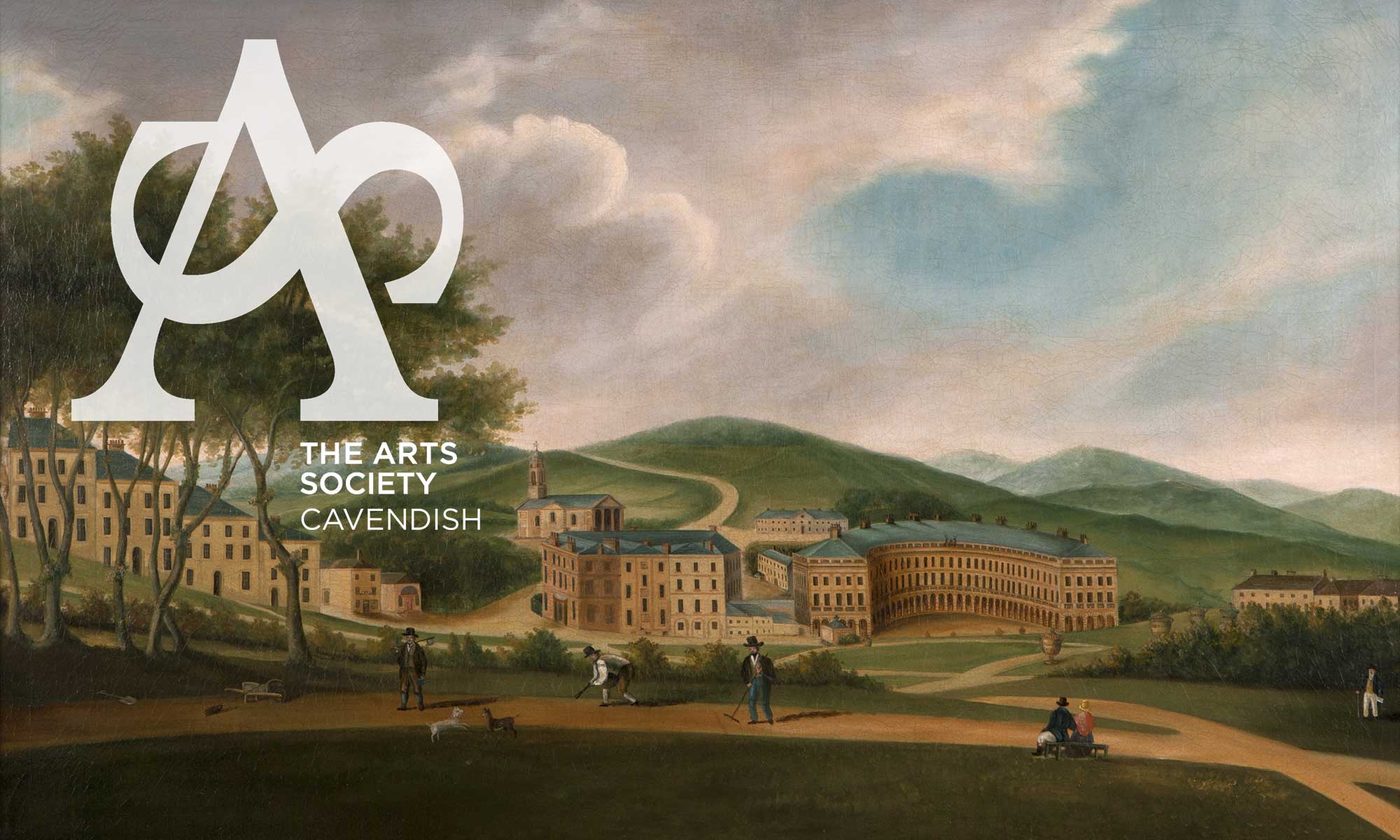Arts Society trip to Glasgow
May 2024
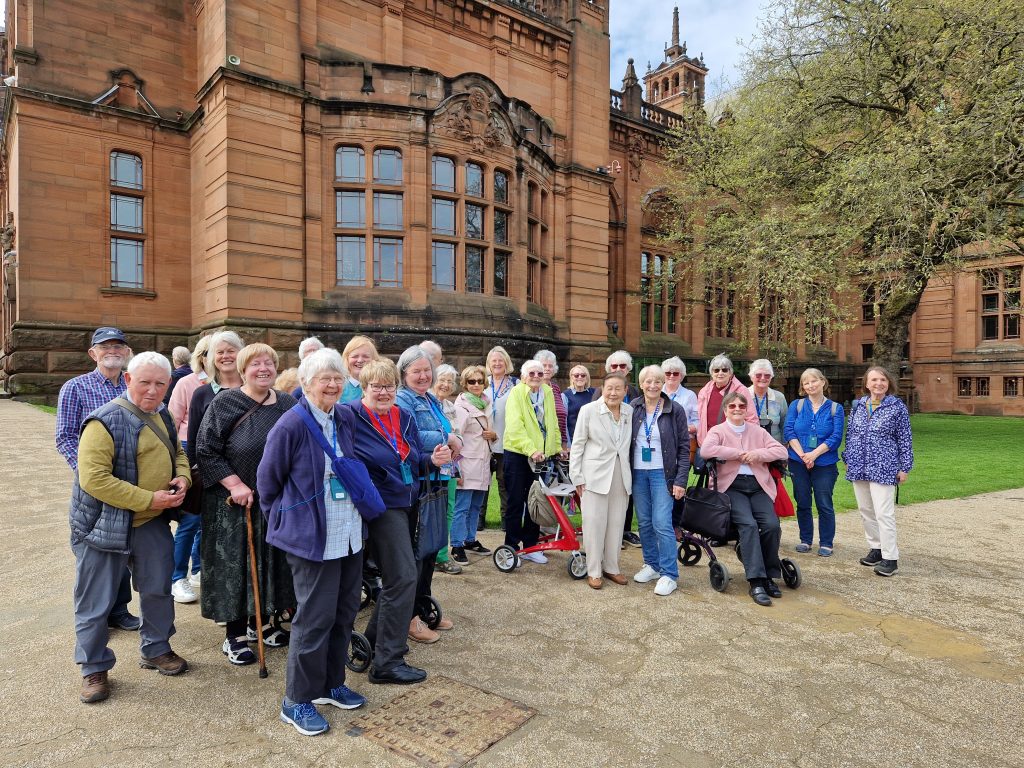
32 members went on a four-day trip to Glasgow, organised by Tailored Travel to our own requirements. We had a brilliant driver (Danny) who looked after us from start to finish. Travelling via Dumfries House to Glasgow, we stayed in a very good hotel in Cumbernauld and had a wonderful guide (Mike) for all the places of interest in and around Glasgow. We arrived at our hotel in late afternoon sunshine and relaxed gratefully. Those of us who had read and absorbed the instructions and information had brought swimming costumes and were abler to make the most of the facilities. Travelling home via Carlisle and the cathedral and castle. The grand purpose of the trip was to see the works of Charles Rennie Mackintosh in the city they were designed for. We were fortunate to visit some of the most iconic places in the arts calendar, including the Cathedral, and our members have given the following reviews.
Ursula Birkett
Dumfries House – Louise Potter

After a very pleasant journey we arrived at Dumfries House to be welcomed by King Charles in The Library (By Video)!! I first visited in 2007 just before King Charles saved this wonderful House and I could see how much the house and garden had benefited from his input. Admitting it was an ‘appalling risk’, King Charles explained that the restoration project was as much about bringing life to the people and local community as it was about reinvigorating the estate itself. He said: ‘The Physical renewal helps the spiritual and psychological.’
It is a beautiful stately home with an outstanding collection of Thomas Chippendale Furniture and a fine example of Adam Design.
Kelvingrove Museum – Joan Knox
With 22 galleries and over 8000 objects there is a lot to see and wonder at in the handsome building that is the Kelvingrove Art Gallery and Museum. Our knowledgeable guide gave us a lightening tour of some highlights and then left us to explore. Of course, we had to spend time looking at and appreciating the works of the Glasgow Boys, in fact some of us spent most of our short visit in that and the French galleries.
As you would expect, there is a collection of Mackintosh furniture, but would you have expected a Spitfire? I didn’t. Our visit coincided with the lunch time recital which is given by visiting organists on the magnificent organ. When the recital ended it was time to go. Most of us felt we would like to be back and explore further. A wonderful collection in a very fine building.
Burrell Collection – Ursula Birkett
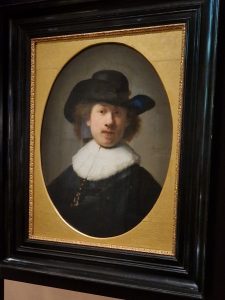
Next stop, the Burrell Collection, a rewarding test of stamina! The collection was created by William Burrell, who lived a long and productive life, very successful financially and devoted those financial resources to acquiring works of art and interest, which he eventually gifted to the people of the City of Glasgow. The scope of the collection is truly astonishing, almost any enthusiasm will find an echo here. A collection that ‘also’ includes a Rembrandt self-portrait is definitely worth a visit and study. Unfortunately, we had only time for a superficial skid round the edges, but time enough for astonishment and pleasure. Interestingly, our large group was split into two smaller ones for a basic initial guided whizz around – and we might have been in two different museums as our guides brought us to their own enthusiasms.
Hill House – Sylvia McKenzie

The Hill House in Helensburgh was created by architects and designers Charles Rennie Mackintosh and Margaret Macdonald. It was designed and built for the publisher Walter Blackie between 1902–1904 to provide a modern family home for his wife and four children. The house is a wonderful example of the Modern Art Nouveau style which Mackintosh captured to marvellous effect. Mackintosh also designed the house interior, including furniture and fittings. Many of Margaret Macdonald’s fine artwork is also on display. In 1982, the house was donated to the National Trust for Scotland (NTS), which maintains and opens the house to visitors.
Containing all of Rennie Mackintosh’s ideas for the perfect home environment, the house still feels as though it could be enjoyed as a family home today. However, the years have not been kind to Hill House and the interiors appeared sadly dark and worn. Over the last few years, the house has suffered badly from water damage, caused by the deterioration of the innovative concrete exterior. To prevent further damage and allow the house to ‘dry out’ the NTS had erected a large ‘cage’ around the property with a roof overhead. This is accessible to visitors and allowed our more adventurous members to explore the upper reaches and observe the whole house in a way that could never have been viewed before (except by birds) – from above the roof.
The gardens are still beautifully kept and overall, the visit gave us the opportunity to imagine the house in its glory days.
Hunterian – Lindsay Crowe
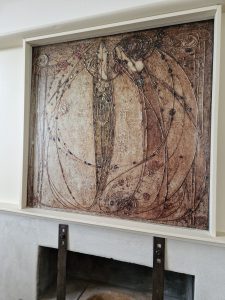
The cultural delights of the city continued on the Thursday afternoon with a visit to the Hunterian Art Gallery. The Hunterian art collection includes work by James McNeill Whistler; some fine works by the “Glasgow Boys”; and the Scottish Colourists as well as European masters including Chardin, Kokoschka, and Rubens. There is a varied collection of portraits on display, depicting subjects from all walks of life, including several household servants by Chardin, which gave both the scullery maid and the cellar boy a quiet dignity. One of the highlights was a 1794 portrait of John Scott of Gala as a young boy by Sir Henry Raeburn. There was also a Stubbs painting of an antelope, again thought provoking.
The first part of the collection is intended to challenge how we view art, as there was no labelling immediately beside the paintings, and no explanation or context is given for the works. There are also several empty frames, perhaps intended to make us think about how art is presented in galleries.
The Macintosh House – Lindsay Crowe
Some of our members also visited the Mackintosh House, which contains the assembled interiors of the mid-19th century house occupied by Charles Rennie Mackintosh and his artist wife, Margaret Macdonald. The rooms faithfully reflect the original interiors and are furnished with the Mackintoshes’ own furniture, all to Mackintosh’s original design. There are also some lovely botanical watercolours by Macintosh on display. The whole effect is stunning, and the Mackintosh House and the Hunterian Gallery were among the many highlights of our visit to Glasgow.
Our final stop enroute for home, was Carlisle, still in sunshine and warmth, where the Cathedral and Castle were to hand and a second-hand bookshop and Marks and Spencer to distract us a little more on our way to home and reunion with abandoned other halves (and pets) after a most fulfilling holiday trip. Well done the Arts Society Cavendish, again.
Richard III
Wednesday 9 November 2022
Ann George arranged for the Arts Society Cavendish to experience the Richard III battlefield and in Bosworth and exhibition centre in Leicester. This was a follow-up to our lecture by Toby Capwell on “The Scoliotic Knight: Reconstructing the Real Richard III”.
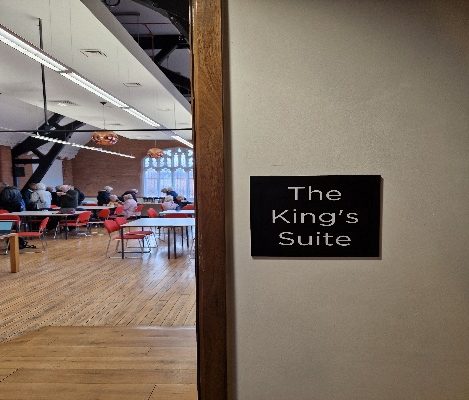
We had an early start and a fun-packed day, collecting 27 members in all from three different locations. Our excellent, and very patient, coach driver, Craig, transported us safely to the exhibition centre in Leicester where we were greeted and given much needed refreshment in the Kings Suite, before embarking on a guided tour of the exhibition.
Our guide, Matthew, treated us to a detailed history of the Wars of the Roses and how Richard became King, followed by an account of the Battle of Bosworth in which he was killed.
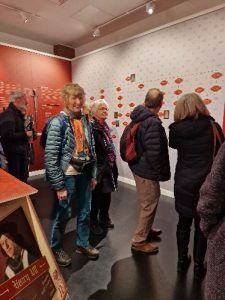
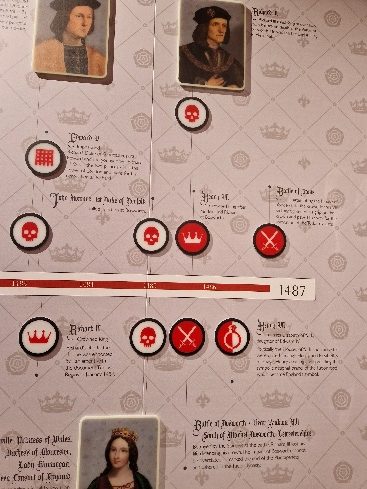

The exhibition was a full description of how Philippa Langley persuaded Leicester University to undertake the Dig which led to the discovery of Richard III body, which can be seen in holographic display in the site of the tomb.

The coincidences that led to the final discovery indicate the importance of synchronicity in our modern world (how subjective experience and coincidence may be casually unrelated yet have some unknown connection).
The exhumation and interment of the body in Leicester Cathedral was illustrated with a talk from one of the Cathedral guides (as the Cathedral is closed for renovation).


This was held over a good lunch in the Kings Suite, followed by free time to wander around the exhibition and view the actual grave site as well as the famous car park.
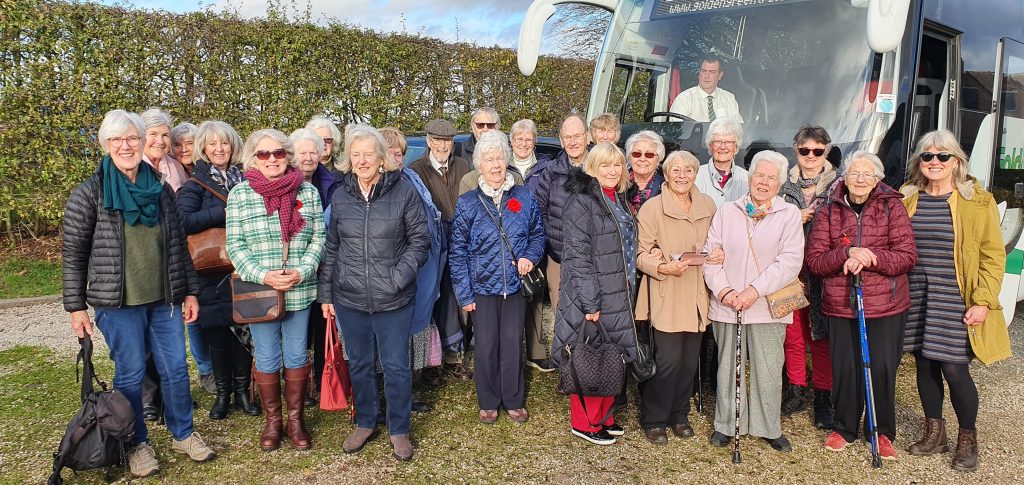
We then travelled on to Bosworth Field, where we were able to immerse ourselves in the battle that led to the end of the Plantagenet dynasty. The exhibits on view were all interactive and we were able to handle (replica) weaponry and armour that would have been used by the various participants.
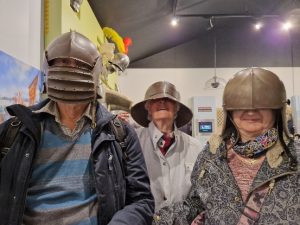
Some of our members availed themselves of experiencing the weight and feel of this equipment! After tea, we were treated to a walk in the autumn sunshine up to the Sundial which indicates the various army positions.
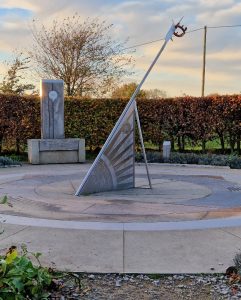
Then our battlefield guide Liz took us to the viewing point where she gave us a blow-by-blow account of the progress of the battle. This informed us of the different strengths of the two main armies (Richard III and Henry Tudor) and how the outcome turned on the perfidy of Thomas Stanley, who had promised himself to Richard but turned and supported Henry at the end of the battle. The outcome is well known, and this led to Richard’s body being ignominiously carried, naked, through the streets of Leicester before being buried in an unmarked grave in the Greyfriars monastery.

The journey home was smooth as the sun set over the Leicestershire countryside. A tired, but happy crowd returned to Derbyshire with stories to tell. An excellent day.
Thank you, Ann!
Lichfield
Thursday 14 Oct 2021
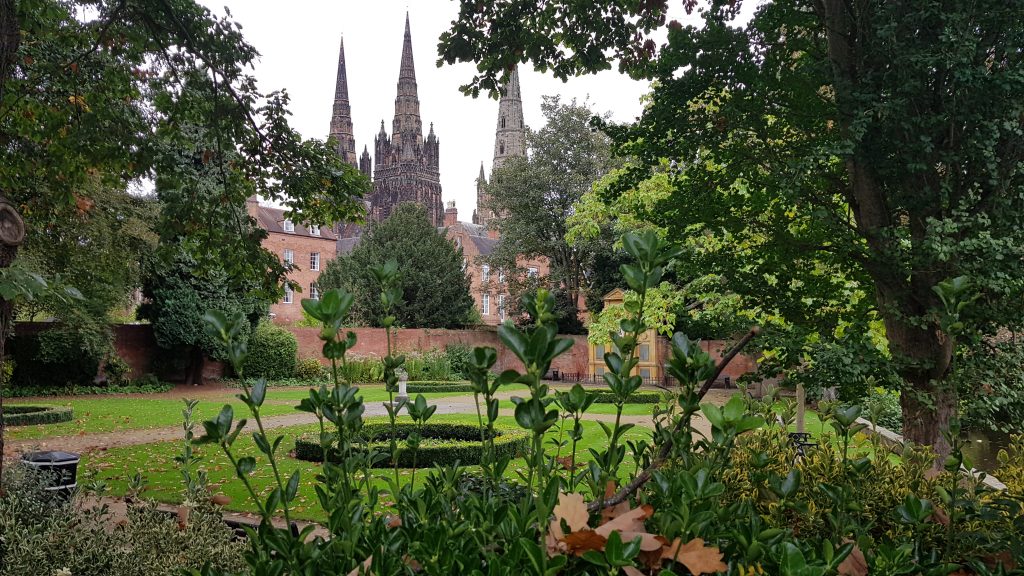
Twenty-two members were bussed to Lichfield for the Society’s first live outing since the pandemic lockdown of March 2020, a full 18 months of Zoom and confinement. Ann George arranged the visit for us and so we were happy to be off, properly masked, but sitting side by side in our comfortable coach, enjoying being driven and being high up with views over hedges through the pleasant countryside of Derbyshire and Staffordshire.
Lichfield Cathedral is remarkable in profile for having 3 spires, one central and two on either side of the West front. It looks blackened, as all such buildings did before the Clean Air Act, but we learnt that this was the effect of a chemical change in the stone, which stabilised it and made it waterproof, so it will definitely not be ‘cleaned’.

Our guides were David and Liz. David was very knowledgeable and kept us interested in spite of the plethora of dates and names to be laid before us, as well as being clearly devoted to the building, its history and its worship. The Cathedral stands (on rock) over various predecessor churches, all dedicated to St Chad, the earliest mention being in 669 in Bede’s History. The present building is medieval, basically built in two stages, Early English and Decorated, so that the East and West ends are quite clearly of different periods and styles. Early on, Lichfield was an archiepiscopal seat, but lost this status quite soon – being small and politically insignificant. During the Reformation and even more during the Civil War th4 building suffered terrible damage when the central spire fell, and there was depredation by removal of stone, lead etc as building material. Surprisingly, the vast oak medieval West door survived intact, and is there yet, though in the 19th century it got new hinges and an interior oak reinforcement.
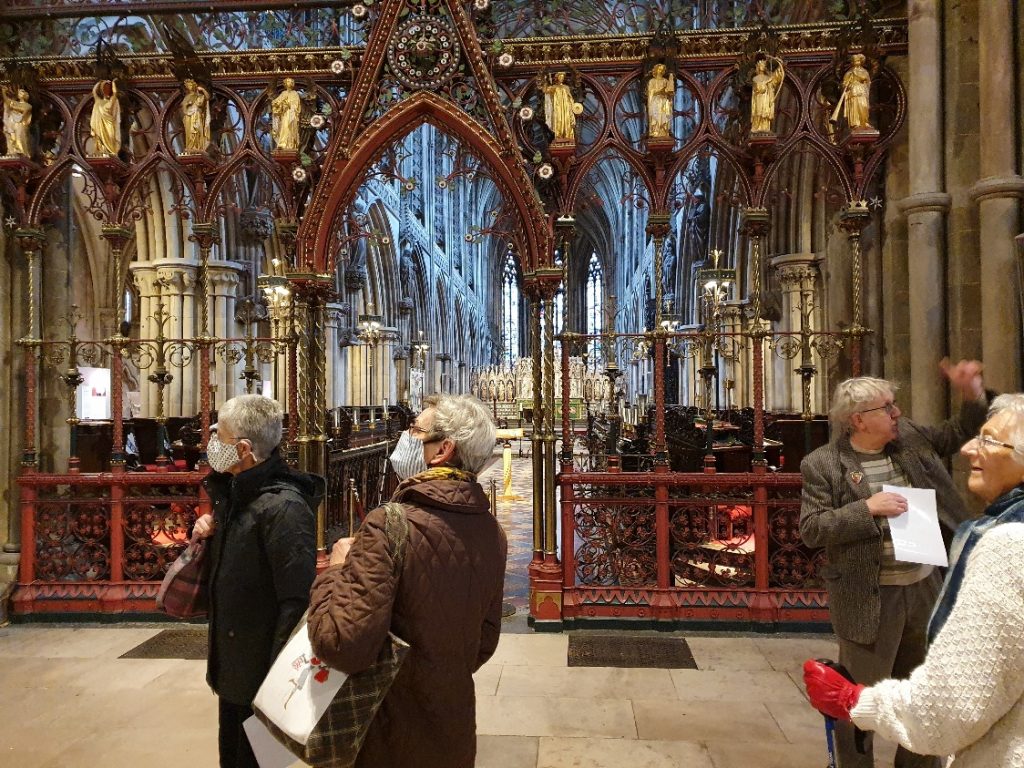
The Victorian restoration was done by Sir George Gilbert Scott, church architect, well known then and since. Nineteenth century restorations are stereotyped as likely to make modern viewers shrink or shudder, but Scott was exceptionally sensitive to what he found, and worked to stay within that mode, working in the style that was there, and even leaving various tactfully exposed original stones or painting to show what had been there, now a very normal restoration practice. He also made a new screen before the choir, at the transept, light and delicately worked, see through and inviting connection through the whole building, rather than excluding the worshippers in the Nave.
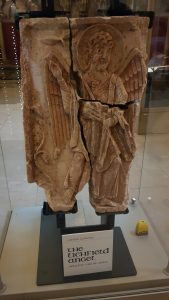
As cathedrals go, Lichfield is quite small, and light, having plenty of stained glass (much 19th century), but also some plain and undecorated thus more translucent. There is a magnificent set of windows, enterprisingly bought from the Abbey of Herkenrode in Belgium, which was shutting down, lovely, but not in the breathtaking manner of, for instance, Ely. The elegant Lady Chapel has an array of this glass.
The Cathedral contains many sculptures, starting with amusing portrait faces amongst the original stonework traceries; a very early half effigy of a medieval knight, through multiple clerical worthies, and locals, and The Sleeping Children by Francis Chantrey (he of the Three Graces) – two children in white marble, portrayed asleep in fine detail, in memoriam in high Victorian mode, a sensation in their time. By contrast there is a strikingly dramatic black bust of a modern Bishop oof Lichfield by Jacob Epstein.
We did have time between the delicious lunch (arranged by Ann) and cathedral tour to walk around the town. It is small and walkable and has some very charming and interesting medieval buildings which survived not only the siege of the Civil War, but also the building of modern shopping precincts. Most famous, perhaps, is the house and garden of Erasmus Darwin, grandfather of Charles, and the birthplace of Dr Johnson, in the Cathedral Close.
We were driven home very calmly, welcomed back into the Peak District by the view descending towards Ashbourne, a reliable pleasure of the return northwards, a good conclusion to an excellent day out.
Ursula Birkett
Welbeck Abbey
Tuesday Aug 20 2019
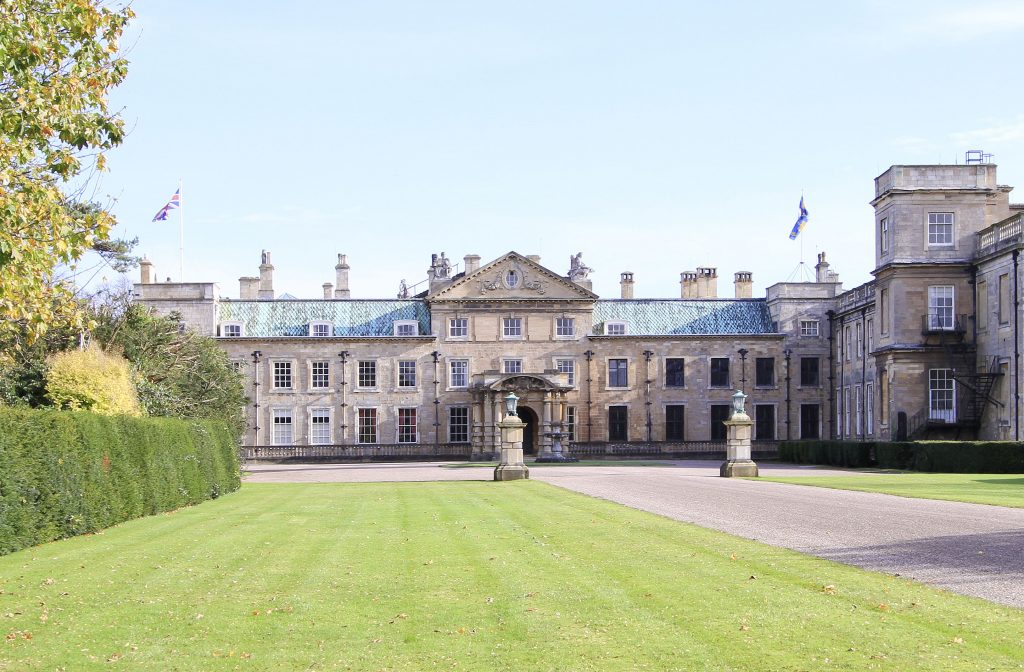
Our tour set off by resident minibus from the sleek Welbeck courtyard with our anticipation heightened by the report of the November theft of the Portland Tiara from the Portland Gallery collection. Tight security evident.
The estate of 15,000 acres evolving over many centuries from 12C abbey – 17C Cavalier residence – English gothic – 19C new work with mysterious labyrinths of tunnels.
Our minibus bus passed the riding house, stables for 90 horses, 800 ft long hothouses, underground ballroom and gardens designed by Francis Richardson in the 18C. Intriguing yet disappointingly not on our tour of the day – future??
Entering the house through the heavily porticoed entrance one is surrounded by the work of John Smythson and our guide made comparisons with his work at Bolsover and Wollaton. The entrance hall 1749 and Gothic hall with plaster vault ceiling standing out. The library with its luxury alabaster fireplace by Pomeroy outstanding. The Chapel with huge Ionic columns of pink marble statuesque.
There is always, not unsurprisingly in the house of Portland, a strong equine presence and paintings of horses abound the walls alongside family portraits.
Which leads me to the mysterious fifth Duke of Portland – his step sister describing him as a ‘handsome but lonely, self-isolated man’ He preferred to communicate with his family by letter through two letterboxes, one for messages and mail in and one for out. He lived in four rooms totally separated from the outside world and embarked on a project of building miles of underground tunnels wide enough for two carriages to pass. WHY? Some say morbid shyness others say his concern for employing staff. He was most friendly to hundreds of workmen employed on his vast and crazy enterprises. It is said that each workman received a donkey and an umbrella when starting work so as to make travelling through the park more comfortable!
Finally, we were whisked back on the minibus for lunch in the sleek and stylish cafe with a delicious menu and a visit to the gallery and farm shop – very foodie!
Thank you to Jennie for planning such an intriguing visit.
Vernon Atkins
Wren Churches walking tour of City of London
8 November 2018

We began with coffee in the crypt of St Paul’s Cathedral, the largest and most spectacular of Wrens creations. Tony was a wealth of knowledge and he took us through a brief history of London from Roman and Saxon times through the medieval period and on to the Great Fire in 1666, that destroyed so much, but provided a blank canvas upon which Wren (and others) were able to rebuild the City.

We passed through the historic alleyways of the City, most of which still follow the medieval street pattern and bear the names of the trades they represent. We heard that 86 of the 107 churches in the City were destroyed over a five-day period in 1666. Of the 51 that were rebuilt most were designed by the office of Christopher Wren. These splendid structures were once again threatened during the blitz of 1940 and it is a miracle that so many survived. Of the 49 churches remaining in the City 22 are of Wren’s design and they contain the works of many of the great wood carvers and stone masons. Many of those churches not restored after the incendiaries burnt them out, still retain Wren Steeples, (eg Christ Church on Newgate Street and St Peter Cornhill) featuring different styles from the Baroque to Romanesque.
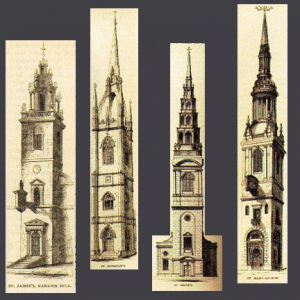
Wren was a designer, technician and mathematician who never trained as an architect. He made up his designs without reference to the great buildings of Europe, which he had never seen.
We strolled past St Pauls and on to St Vedast alias Foster. Founded in the thirteenth century it was redesigned by Wren after the fire. A delightful small church that was again rebuilt after WW!!, it features the Stephen Dykes Bower and stained glass with scenes from the life of St Vedast. Many of the furnishings were reclaimed from other Wren churches during the refurbishment, and all are authentic seventeenth century artefacts. The richly carved octagonal pulpit is from All Hallows Bread Street and the font cover is from St Anne and St Agnes.
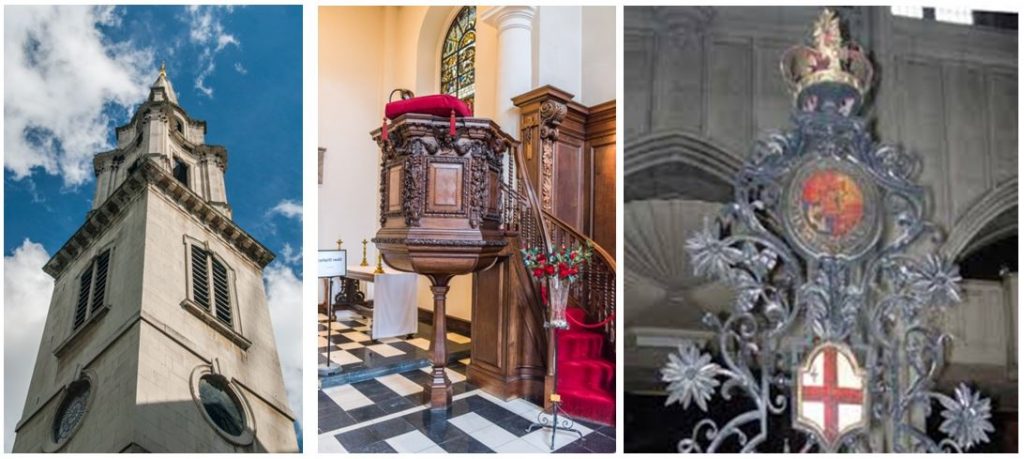
Most of the churches have ‘sword-rests’. There are still 58 remaining in the City churches and Tony Tucker is the only person who has researched and photographed them all! They are beautifully rendered examples of wrought iron and gold work upon which the Lord Mayors sword is placed when he/she visits. The one in St Vedast is also from St Anne and St Agnes.
From the exterior, St Mary Abchurch looks very ordinary apart from the Wren Steeple and shows no hint of the treasures within. The interior is a ‘treasure chest’ of sixteenth century craftsmanship and is almost unchanged. It is the home to the ‘Friends of the City Churches’ and has carvings by Grinling Gibbons, a fine painted ‘tetragrammaton’ dome by William Snow, stonework by William Emmet and a pulpit by William Grey. It is tiny by comparison to other churches and demonstrates Wren’s genius with creating space.

St Pancras church on Wood Street was destroyed in the fire and not rebuilt. A huge London Plane Tree stands where the church once stood. On the corner of this historic street rests ‘the least sort of building’ which has been a milliners shop and still houses a small greeting card shop.

St Mary Aldermary is a rare example of Wren working in the gothic style. It is pointed perpendicular and features polygonal buttresses and finials. The fan vaulted ceiling is by Henry Doogood and it has an ‘off-beam’ sloping altar space. After restoration in the 1950’s, the new east window shows, in stained glass, the defence of London during the blitz. However, the pulpit is a Wren original.
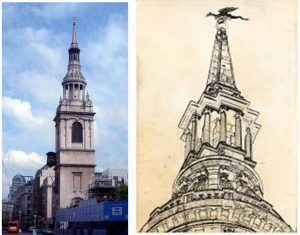
The church of St Mary le Bow (home to the original Bow Bells) was the worst hit by incendiaries during the blitz and the interior was re-designed in the 1950’s by Lawrence King. The tower, which houses the new Bow Bells, has a magnificent golden flying dragon girouette.
Tony believes that Wren’s real masterpiece is St Peter Wallbrook. It has been called ‘the most perfectly proportioned building in the world’. In the baroque style, the huge dome is reminiscent of the Pantheon in Rome, supported by arches and columns.
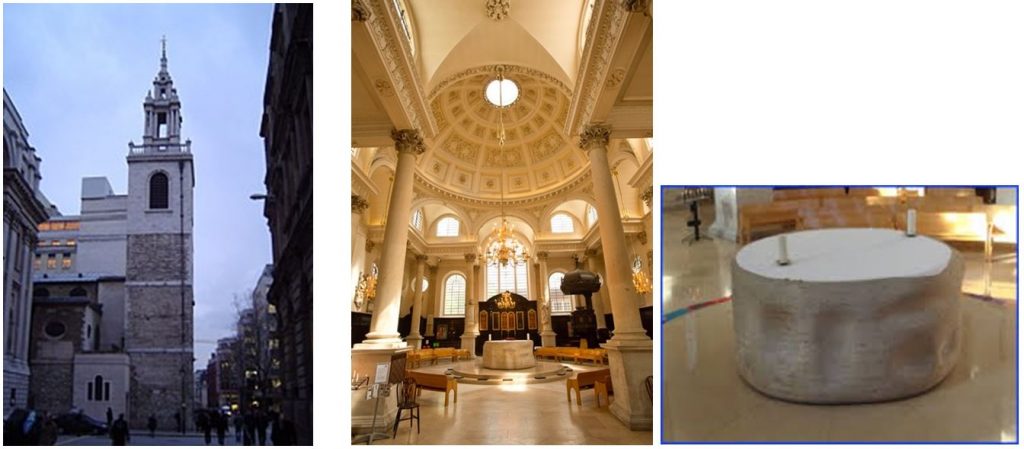
Lord Columbo’s modern central altar was designed by Henry Moore, but many of the other pieces are by original sixteenth century craftsmen, such as the carvings by Newman and the work of the carvers and stonemasons is superb. The large sword rest bears the arms of Queen Anne.
Most notable in this church is the telephone used by Chad Varah to make the first calls of the Samaritans, which he founded in 1953.

After the great fire of 1666, which last for five days, the blitz in 1940 was the final threat to these magnificent churches. Between 6pm and midnight on 29 December 1940, 200 incendiaries fell on the City every minute. All the churches in the City that were rebuilt after the great fire and the blitz have been funded partly by the government and the church commissioners, but many were and still are supported by local fund raising. Most have no regular congregation and rely on donations.
Tony Tucker is an accredited City of London guide and a world expert on the Wren churches in the City. He has a degree in modern history and worked in the City for 40 years before taking on the mantle of guiding art and history lovers around. Our thanks to Tony, who made this the most interesting day full of magnificence and wonder.
Sylvia McKenzie
Where do you buy your Christmas turkey?
9 NOVEMBER 2018
A group from the Arts Society Cavendish joined Peter Twist, an accredited City of London Guide, to visit Smithfield Market and the London Mithraeum. What we did not realise was that we were to be treated to a walk through the City that encompassed 2000 years of history.
Meeting at 6.30am and following the medieval streets that still bear the names of the trades and guilds they represented, we wove our way from St Bartholomew’s Church, (founded by St Rahir in the twelfth century after a visit to the Holy Land), through Cloth Fair Road (where the pub is called the Hand and Shears). This is where the Lord Mayor cut the first cloth each year and prisoners were given a final ‘pint of ale’ before being taken to the gallows at Newgate. It is from this that our saying ‘One for the Road’ derives.

Then on to Smithfield. There has been a market here since the eleventh century and its reputation for violence and criminality was rife until the area was cleared in mid 1850’s and the new market was built. this impressive structure built in 1868, is the main meat market and remains an icon in the City. The architect Horace Jones, was the City of London Surveyor and he also designed Tower Bridge. By Charter, members of the public are allowed to buy meat here (including turkeys at Christmas) and it is the busiest part of the City during the wee small hours.

The market is built of wrought iron and the decoration is of the finest Victorian industrial work to be seen. It is built like a railway station and features a ‘Grand Avenue.
Work begins in the early hours, when butchers from all over the country arrive with their products. These are now delivered direct to the doors, but in years gone by the meat was delivered by a purpose built rail system below the streets and carcasses were brought in by ‘Bummerees’, meat porters who were highly unionised and a law unto themselves. Then on to the ‘pitchers and pullers’ who carried the meat into the individual stalls. The Job’ (ie the ‘pitch’) was handed down from generation to generation and could be sold on for as much as £8000 in 1992. After this time, the control of delivery changed, when the unions were effectively disestablished and refrigeration meant fewer porters were needed.
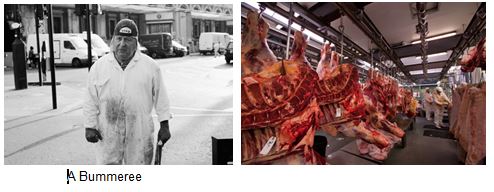
Many of these stalls remain in family hands and all the butchers we met had worked here for many years. There is a saying within the market that ‘we have been here yesterday, today and tomorrow’.
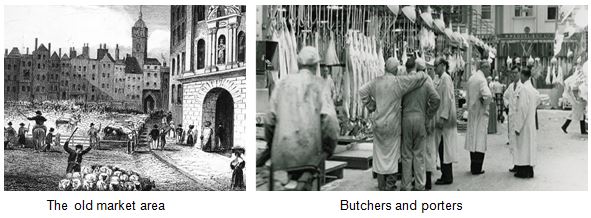
Many of the older butchers walk with the ‘Smithfield Shuffle’ due to carrying huge carcasses on their shoulders. Nowadays the butchery areas are refrigerated and subject to Health and Safety regulations.
Mr Lawrence, the Chair of the Market Traders told us that the turnover of the market is around £1billion per annum. Many of the old butchering families have become wealthy. But this does not deny the hard, physical work still involved in this trade. Meat comes from all over the world and the customers include butchers, pubs, hotels, hospitals and ethnic groups.
We then walked on to the poultry market, which extends from the Grand Avenue and was rebuilt as a modern structure after a fire destroyed the original in 1958. Two firemen were killed and this led to changes in safety precautions and breathing apparatus for firemen. The new structure has the largest domed concrete roof still existing anywhere in Europe.
On to the fruit and vegetable market which has fallen into disrepair.

Built shortly after the meat market and with similar wrought iron work, this (and the basement of the poultry market) is deemed to become the new Museum of London and will replace that at the Barbican Centre.
Next we had a wonderful breakfast in one of the porters cafes. Peter, who seemed to know everyone, took us round the corner and was once again a fount of knowledge about the area and full of amusing anecdotes, including the pop-up urinals!.
Sated by breakfast, and expecting to go directly to the Mithraeum, we found ourselves being escorted through some of the most historic areas of the City. Beginning with St Bartholomew’s Hospital, that lies directly opposite the market, we were given an historical adventure, beginning with Henry 1 in 1123, on through the medieval and Tudor periods and into the modern era. The hospital has a dedicated ‘Maggie Centre’ and relaxation area for patients undergoing cancer treatments.
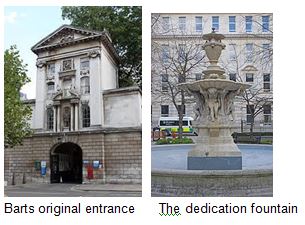
This area is steeped in history from the execution of William Wallace in 1305, through John Bull and Watt Tyler 1381 to the Protestant Martyrs 1555-7. Their memorials lie on the outer walls of the hospital. The archway to St Bartholomew the Great is Tudor and features the only statue of Henry 8th in the City of London.

Peter then surprised us by taking us through the modern 1960’s Barbican Estate towards the Mithraeum. This included strolling along the raised walkways called ‘Pavements in the Sky’. These are intended to replicate the old City pathways and give wonderful views across the City from angles we could not have imagined.
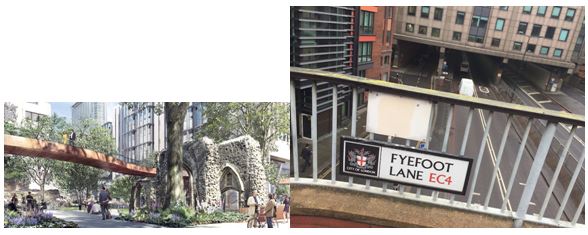
The scheme was borne from the devastation of the second world war. Heavy bombing had destroyed much of the City. But with destruction came hope. Planners had a rare opportunity to start afresh with the city’s fabric. The time was right to attempt a separation of pedestrians from traffic. The Pedway Scheme was born.
On to the Mithraeum. A chance discovery in 1952 on a bomb site revealed the Temple of Mithras. It captured the imagination of Londoners after WW11 and, led by archaeologist William Grimes, a team gradually uncovered this Roman ruin. The 1962 reconstruction was unveiled 100 metres from it place of origin. In 2010, when Bloomburg acquired the site for a new office block, they agreed to incorporate the temple in the basement of their new building. The result is impressive. A modern interpretation includes lights and sounds that give the viewer an impression of what it may have been like for Roman soldiers worshipping their god.

A huge range of artefacts discovered during the excavation is displayed throughout the museum and information is greedily devoured by all visitors.
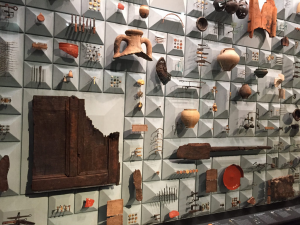
Wow! What a day. Peter was such a knowledgeable and enthusiastic guide. And so he should be having an LLB from Manchester and being a retired Chief Superintendent of the Met, he knows London and the City ‘like the back of his hand’ and he gave us that knowledge in a thoughtful and amusing way. Thank you Peter.
Sylvia McKenzie
Fancy a Swim? Visit to Victoria Baths Manchester
8 May 2018
The day started well as we were collected by Andrew (brilliant driver) of Andrews Coaches and taken into the heart of the city to the famous Victoria Baths. We were greeted by Gina, one of the management team and given refreshments before meeting our dedicated guides, Gill and Cath. They proved to be extremely professional and knowledgeable about the history of the baths and its current restoration programme.
The baths were designed and built by Manchester Corporation in response to the 1846 Baths and Wash Houses Act. This was intended to tackle outbreaks of cholera and other diseases borne by dirt and dirty water. The baths, created in the Art Nouveau style, were opened in 1906 and remained in constant use until closure in 1993. The building, already grade two listed, was by then in disrepair and the business was no longer profitable. Once closed, the building deteriorated further and it was in danger of demolition. At this time, Manchester residents who valued the baths and the building, formed a campaign to restore the baths. These are the ‘Angels’ who run the ‘Archangel Appeal’. The charitable trust is intended to preserve the baths for the nation and sporting history; to re-invent the swimming pools and the Turkish baths.
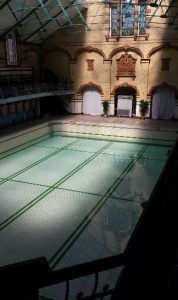
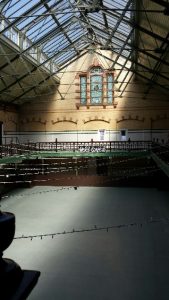

There are three main pools and three separate entrances for ‘first class men’, ‘second class men’ and ‘women’! The main gala pool is still used occasionally for special swimming events, the men’s second class pool is boarded over and can be hired for special occasions such as concerts or weddings and the women’s pool is currently unused.
The design of the building is typically Gothic in style and features many different brick patterns and a splendid clock tower. The interior is magnificent, even where there is still dilapidation, with wonderful green Pilkington tiles lining the walls and many featured balustrades in fine wrought iron work.
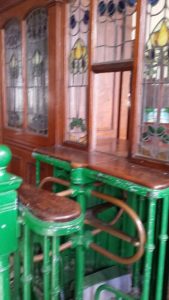
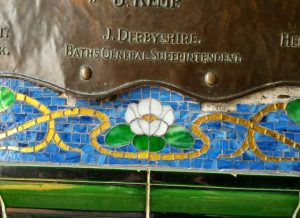
All the materials on the original building were of the highest quality: hard wood doors and window frames, cast iron pillars supporting the changing cubicles and the most magnificent stained glass.
The stained glass windows throughout have been restored to their original glory, though miraculously, only the leads needed replacing as almost all the coloured glass remains intact.


The ongoing restoration plan includes the refurbishment of the Turkish Baths (English style) and the Superintendents accommodation on the first and second floors. This spacious apartment will be used to generate income for the baths, along with the Turkish baths and the other corporate and private hire of other parts of the building.
Now for a Dive into the past!
After a pleasant lunch and visit to the gift shop, we departed for a visit to Elizabeth Gaskell House. This beautiful Victorian villa was built in 1838 and later became the family home of Elizabeth and William Gaskell. Our expert guides were able to give us the family history and a tour of the restored rooms. The celebrated author of North and South, Cranford and Mary Barton, moved into the house in 1850 with her Unitarian Minister husband and four daughters, intending to make the villa into a social magnet for the literati. Many famous authors visited Elizabeth there, including Charlotte Bronte and Charles Dickens.
 After the death of Elizabeth’s remaining daughter in 1913, the house became another family home and latterly was purchased by Manchester University as a residence for overseas students. It was acquired by the Manchester Historic Buildings Trust in 2004 and fundraising to restore the building to the family home began. The house is built in the late Regency style and features many original architectural pieces, including the fully restored drawing room and dining room. Though much of the original fixtures and fittings were lost to the sale rooms after 1913, original period pieces have been sourced to furnish these rooms which have the feel of a pleasant family home.
After the death of Elizabeth’s remaining daughter in 1913, the house became another family home and latterly was purchased by Manchester University as a residence for overseas students. It was acquired by the Manchester Historic Buildings Trust in 2004 and fundraising to restore the building to the family home began. The house is built in the late Regency style and features many original architectural pieces, including the fully restored drawing room and dining room. Though much of the original fixtures and fittings were lost to the sale rooms after 1913, original period pieces have been sourced to furnish these rooms which have the feel of a pleasant family home.
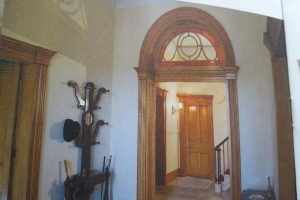
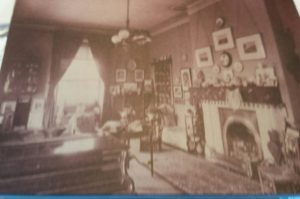
The restoration is sympathetic to the original designs and carpets and fabrics have been specially made to give a feel of what the family would have experienced. On the whole, I think we all felt it would be lovely to spend an evening in that drawing room, discussing art and literature with the authors and poets of years gone by!
The afternoon was topped off with a delicious tea in the servant’s hall, which is now the tearoom for visitors. Finally, we had a brief look at the gardens before the rain came down and it was time to return to the Peak District.
Many thanks to Jennie Ball for organising this trip which proved to be of interest and delight to us all.
Sylvia McKenzie
SCAMPSTON HALL
12th SEPTEMBER 2017
Scampston Hall: the very name sounded intriguing, mischievous even…and I had never heard of it. Where were we going? Jennie Ball expertly marshalled twenty five of us onto the coach in Baslow on what was for me a Mystery Tour such as my aunts would delight in many years ago. The Hall was in fact past York, near Malton…new territory for me.
The previous day rain had lashed horizontally across the Hope Valley; you couldn’t see the tops of the hills in such grey murk. Today, the late Summer sun beamed benignly down on us which proved fortunate as Scampston Hall is noted for its magnificent and fairly new gardens established in 1999 by Piet Oudolf. Elizabeth Wetherall, a fellow voyager, held her umbrella tight; it was bound to pour if the umbrella were forgotten! And so it proved, the rain was held at bay until we were on the coach homeward bound.
Piet Oudolf now in his seventies has written a number of books on gardening and garden design:
“A garden is exciting for me when it looks good through the year, not just at one particular time. I want to go outside and for it to be interesting in all weather, in early spring and late autumn.”
So he takes his cue from architectural designs and shapes using great swathes of grasses, yew hedges and blocks and other structural characteristics of this new European garden style. It can be seen in his own garden near Arnhem, Netherlands. Scampston garden is his largest private commission in the U.K. We were able to wander through interconnecting gardens linked by clipped yew, box and planched lime trees. Drifts of tall grasses make up one garden planted in wavy formations. The borders were full of soft hued perennials punctuated by ornamental grasses. But what was the highlight for me was the abundance of butterflies…flights of red admirals fluttered everywhere alighting on sedum and tall eupatorium…a plant I’ve now purchased for my own garden.
The Hall itself is a fine regency country house which was bought by the St. Quintin family towards the end of the seventeenth century and has remained in the family ever since with much remodelling as fashion dictated. When the current owners Christopher and Miranda Legard moved in during the 1990s, they found a damp leaking unheated habitation. The Hall has been transformed, reroofed, rewired and substantially redecorated although it was lovely to go into a bedroom with wallpaper from almost 150 years ago still on the walls. Brides change there now as it’s used for weddings.
Three interlocking ground floor rooms were a delight and the views over the parkland designed by Capability Brown were magnificent. We later walked to the cascade and palladian bridge over the river. All in sunshine! Perfect! The Hall also has some fine paintings, notable are the six by Thomas Gainsborough…and many more by his contemporaries.
Of course, another key pleasure was lunch and the coffee shop. All in all it was a very interesting day and a great pleasure to visit another of our country’s hidden gems.
Thanks to Jennie.
Caroline Jackson
Art Out Loud at Chatsworth
20th September 2016
Those of us who were lucky enough to be in the group had a fascinating day. Barbara and Liz had carefully chosen three very contrasting talks. The first was Jonathan Rutter, a successful investment banker, in conversation with Matthew Parris. Coming originally from the North East, and with great encouragement from Neil MacGregor (British Museum) and Simon Jenkins (National Trust) he set about rescuing the Bishop’s Palace at Bishop Auckland with its exceptional collection of pictures depicting Jacob and his twelve sons by Spanish artist Francisco de Zurbaran. The Church Commissioners had planned to sell the paintings although they were an integral part of the Palace and its history. The only drawback of the talk was that the limited slides did not show any interior views of the palace, its historic chapel nor of the paintings. However it did take place in the theatre at Chatsworth, still with its original painted proscenium arch. Prior to that it had been a ballroom with open chambers at the rear for gentlemen to play cards and minstrels gallery still in evidence.
The bishop’s Palace/ Auckland Castle still has the tabled restoration outstanding but one can visit everyday except Tuesday.
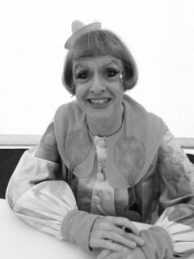 Next was Grayson Perry in a colourful clown-like garment, designed by a student at St. Martins as are all his dresses. He called his talk Chinese Whispers: Global conversations between local artists’. With customary combination of humour and original insights, as displayed in his Reith Lectures – he went on to show us with a steam of illustrations how all art, including his own was derivative.
Next was Grayson Perry in a colourful clown-like garment, designed by a student at St. Martins as are all his dresses. He called his talk Chinese Whispers: Global conversations between local artists’. With customary combination of humour and original insights, as displayed in his Reith Lectures – he went on to show us with a steam of illustrations how all art, including his own was derivative.
After the morning talks we had time to ourselves providing the opportunity to have lunch and to explore Sotherby’s selling exhibition of sculptures entitled Beyond Limits: the Landscape of British Sculpture 1950 -2015.The most dominant work of award winning sculpture “the Dappled Light in the Sun 1-111” was created by our last speaker, Conrad Shawcross.
He was in conversation with Tim Marlow. His work was on a large scale, often geometric. He saw his work as an exploration of a range of concepts including time and space and if I understood correctly, even language – perhaps because both his parents are writers. He claimed to have been saved this fate by dyslexia. Although he was the artist and designer of the work the help of an engineer was needed to bring the metal structures into being. Conrad referred to his sadness at not being able to be totally ‘hands on’ he had been in the past with some of his earlier sculptures in wood.
At the end of the afternoon the Duke of Devonshire took the stand to say that he and the Duchess hoped to put on a similar event next year. Personally I would be delighted if they did, especially as our visit was so ably organised by Liz Wake and Barbara Hudson. To them we give our warmest thanks.
Hilary Armitage
Birmingham Museum of the Jewellery Quarter. Birmingham Museum and Art Gallery
6th September 2016
In 1899 Charles Smith and Edwin Pepper went into partnership as manufacturing jewellers in Vyse Street Birmingham. They made gold bangles, brooches, cufflinks, lockets and crosses. In due course a second generation of Smiths ran the business, brothers Mr Eric and Mr Tom as directors and Miss Olive as company secretary. None of them ever married and they lived together in a grand country house on the edge of Worcestershire travelling in to Birmingham each day. They were good employers; when the business eventually closed their longest serving employee had been with the business 60 years and the next longest 40 years. However by the end of the 1980’s Mr Eric was 81,Miss Olive 78, and Mr Tom 74. They were comfortably off, there was no family to leave the business to so one day they simply shut the front door, locked up, and walked away! Papers were left scattered in the office , and downstairs in the workshops tools , tea mugs, cigarette packets and the like were left on the benches as if the staff had merely gone for lunch. For many years all remained undisturbed until in 1990 Birmingham City Council were persuaded to buy the building and preserve it as a complete example of a working jewellery factory and so it stands today as the Museum of the Jewellery Quarter.
28 of us travelled to Birmingham in an enormous 6 wheel coach which negotiated the narrow streets and tight junctions with remarkable ease and managed to park on time right outside the museum. We were then after coffee treated to a tour which took us through the whole of the manufacturing process with ancient machines and presses being operated by our guide. At the end of the process and before polishing and buffing the jewellery was dipped in an acid bath to remove any foreign matter. This work was done by the tea lady and there we saw the teapot and sugar bowl and cups and saucers sitting on her workbench next to the acid bottles! A health and safety inspector would have a fit. We also had an insight into why the business was so profitable. Enormous trouble was taken to collect and preserve gold dust that was a side product of the manufacturing process. Each workbench had an apron attached to it which the manufacturing operative put across his knees to catch any residue. The buffing machines had an air extraction point beneath them to prevent gold residue falling on the floor and being dissipated. The extraction system sucked in the gold dust and residue which was taken through a system of pipes dropping into a sawdust pit. The sawdust was then removed and burnt leaving the gold to be recovered. The directors even ensured that worn out overalls were burnt to recover any gold residue.
It was a fascinating tour of a jewellery factory in complete albeit old fashioned working order. At the end our guide told us there was in the entrance hall a visitors book in which we were invited to make comment. He said if we had not enjoyed the tour his name was Steve but if we had his name was George. His name was definitely George.
Like most of our great cities Birmingham has a superb collection of art much of it given or lent over time by wealthy local industrialists. In particular the Birmingham Museum and Art gallery which we visited in the afternoon has the largest collection of Pre Raphaelite paintings in the country. The Pre Raphaelites rejected the art of the previous generation as substandard; they referred to Sir Joshua Reynolds as ‘’ Sir Sloshua Reynolds ‘’.They sought to put more detail and complexity into their work together with intense colour, seeking the discipline of the painting of earlier times ( hence Pre Raphaelite ).We had a guided tour of the Pre Raphaelites but concentrating on three great paintings; Lizzie Siddall by Rossetti,portrayed as a beautiful but dying woman, The Blind Girl by Millais ( surely no impoverished blind girl could really look as good as this ), and The Finding of Christ in the Temple by Holman Hunt, all three exquisitely painted in almost obsessive detail and in the most beautiful bright colours.
As we were split into two groups for the guided tour we also had some time to explore and see some of the rest of the collection. By way of example of the quality as well as the quantity of the collection I noted in one room alone, of British 20th century art paintings by among others Walter Sickert,Augustus John, Gwen John, Alfred Munnings, Paul Nash, L.S.Lowry, Barbara Hepworth, and Ben Nicholson.
If you like and are moved by paintings and have not been there Birmingham Museum and Art gallery is a must.
All in all a most successful day. Our thanks go to Liz Wake for yet another impeccably organised visit.
Peter Stubbs
